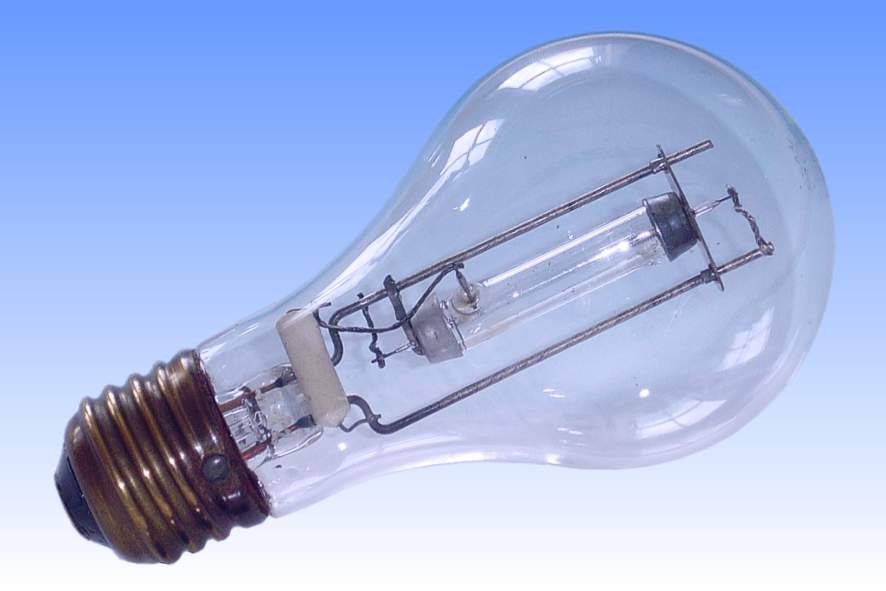
|
S-4 Sunlight Mercury Discharge |

The market quickly evolved and fuelled a desire for lamps having increased sun-tanning power, with less interest in the full spectrum for general health and well-being. The introduction of the low wattage H-4 quartz mercury lamps proved to be an ideal source of UV, however their outer envelopes blocked the shorter wavelengths required for skin tanning. The H-4 arc tube was therefore sealed into the UV-transmitting bulbs of the S-1 and S-2 lamps, and in 1939 this S-4 model was born. It could be operated on a simple inductive ballast and the bulky transformers required for the earlier lamps could be dispensed with. The S-4 soon became one of the most popular ultraviolet lamps for suntanning in the Americas.
The seals in this lamp are especially primitive and pre-date the modern moldybenum foil seals. Each of the tungsten lead wires to the electrodes is glazed in a high expansion glass, and via two other intermediate glasses is sealed to the quartz tube. The ends of the arc tube are shielded by small metal cups which act as heat reflectors, to raise the mercury vapour pressure and increase UV power.



| Manufacturer: | General Electric Co. of U.S.A. |
| Lamp Power: | 100 Watts |
| Lamp Current: | 0.9 Amps (1.3 Amps during starting) |
| Lamp Voltage: | 130 Volts (190 Volts during starting) |
| Cap: | E29s/28 (Admedium Brass) |
| Bulb Finish: | Clear hard glass (transmitting down to 280nm) |
| Bulb Type: | A-60 (A-19 in American units) |
| Overall Length: | 5 5/8 inches (142.9 mm) |
| Light Centre Length: | 3 7/16 inches (87.3 mm) |
| Electrodes: | Backwound tungsten with thoriated shank |
| Atmosphere: | Inner : Argon Outer : Nitrogen |
| Luminous Flux: | 3,500 lm |
| Luminous Efficacy: | 35 lm/W |
| Total Ultraviolet Output: | 68,000 E-Vitons |
| Run-up time: | 3 minutes (with 3 minute restrike delay) |
| Rated Life: | 1,000 hours |
| Factory: | Hoboken, N.J., U.S.A. |
| Date of Manufacture: | August 1940 |
| Original / Present Value: | Not Known |
